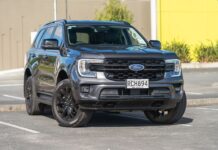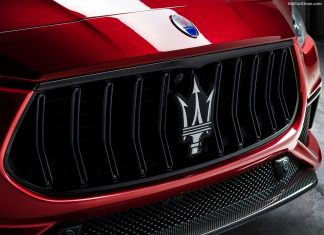Whether you’re lifting a truck, lowering a sports car, or simply upgrading your daily driver’s wheels, offset and backspacing are two crucial measurements you need to understand. Getting them wrong can lead to clearance problems, poor handling, and even unsafe driving conditions. Below, we’ll break down wheel offset vs. backspacing so you can make the right choice for your ride.
1. Why Offset and Backspacing Matter
Offset and backspacing impact how far in or out your wheels sit relative to the fender and suspension components. This can affect:
- Handling & Stability: Wheels that poke out too much or sit too far in can alter steering feel.
- Tire Clearance: The wrong setup can lead to fender rubbing or suspension interference.
- Vehicle Appearance: Choosing the right offset and backspace can make your car or truck look more aggressive or maintain a factory-style fit.
2. Wheel Offset: Negative vs. Positive Offset Explained
Offset measures the distance between the wheel’s mounting surface (the part that mates with the hub) and the wheel’s centerline, usually in millimeters.
Positive vs. Negative Offset
- Positive Offset
- The mounting surface is toward the front (outer edge) of the wheel.
- Common in modern cars and many OEM setups.
- Wheels sit closer to the suspension, giving a tucked-in look.
- Negative Offset
- The mounting surface is toward the back (inner edge) of the wheel.
- Found on certain off-road wheels and older muscle cars.
- Creates a deep dish or aggressive stance, with the wheel poking out more.
- Zero Offset
- The mounting surface is centered exactly on the wheel’s midpoint.
- Some classic trucks and older vehicles use zero-offset wheels.
In essence, negative vs. positive offset directly influences how far your wheels extend outward or inward under the fenders.
3. Backspacing vs. Offset: What’s the Difference?
Backspacing measures from the inner edge of the wheel (the side facing your suspension) to the mounting surface. It’s typically measured in inches, unlike offset, which is in millimeters.
- Offset: Distance between the mounting surface and the wheel’s centerline (in mm).
- Backspacing: Distance between the mounting surface and the inside lip of the wheel (in inches).
You can convert one measurement to the other if you know the wheel’s total width and lip thickness, but keep in mind they start at different reference points and often use different units.
4. How to Measure Wheel Backspacing vs. Offset
Measuring Offset
- Remove Wheel: Take the wheel off your vehicle.
- Determine Wheel Width: Measure the distance between the inner and outer bead seats (where the tire sits).
- Find the Centerline: Divide the total wheel width by 2.
- Measure Distance to Mounting Surface: The offset is the distance from this centerline to the mounting hub. If it’s a positive number, that’s positive offset; a negative number means negative offset.
Measuring Backspacing
- Wheel Flat on the Ground: Place the wheel face-down so the inside (back) faces upward.
- Straight Edge Across Inner Lip: Lay a ruler or level across the wheel’s inside rim.
- Measure Down to Mounting Pad: The distance in inches to the area that sits against the hub is your backspacing.
5. Converting Backspace to Offset (and Vice Versa)
If you know your wheel’s backspacing but need the offset, here’s a rough formula:
- Convert Wheel Width to Millimeters: 1 inch =25.4 mm1 \text{ inch } = 25.4 \text{ mm}1 inch =25.4 mm.
- Find the Wheel’s Centerline: Total wheel width÷2\text{Total wheel width} \div 2Total wheel width÷2.
- Offset = Backspace – Centerline (accounting for lip thickness).
A positive result means positive offset; a negative result means negative offset. If you’re unsure, use an online calculator or recheck your math.
6. Real-World Scenarios: Why Offset & Backspace Matter
Scenario 1: Lifted Truck
- Larger Tires: Off-road tires often need wheels with negative offset or reduced backspacing to avoid suspension rubbing.
- Wider Track: Negative offset gives an aggressive stance, but too much can cause rubbing on fenders or flares.
Scenario 2: Sports Car/Track Car
- Handling & Clearance: A slightly lower (more negative) offset can widen your stance, improving cornering. However, going too extreme may cause fender or wheel well clearance issues.
- Brakes: Big brake kits might require wheels with certain offsets to ensure caliper clearance.
Scenario 3: Classic Muscle
- Deep Dish Look: Many muscle car owners prefer negative offset or minimal backspacing for that traditional deep-dish style.
- Balance: Keep an eye on potential interference with leaf springs or other suspension parts.
LA Wire wheels
LA Wire wheels are famous for their vintage, spoke-style design, frequently seen on lowriders and classic cars. Backspacing is especially crucial here because wire wheels can have unique inner structures that must clear brake components and suspension arms. Meanwhile, using too large of a negative offset might push the wheel’s spokes too far outward, risking contact with fenders or requiring extra modifications. When you’re after that authentic old-school look, double-check your offset or backspacing numbers so you don’t sacrifice drivability.
7. Positive vs. Negative Offset: Which Is Best?
Picking between positive and negative offset depends on your vehicle type and style goals:
- Positive Offset
- Common in modern sedans, compact cars, and SUVs.
- Preserves factory geometry and reduces the chance of rubbing.
- Negative Offset
- Popular with lifted trucks, older muscle cars, and off-road enthusiasts.
- Achieves a more aggressive stance but may require fender flares or suspension tweaks.
Intro Wheels
Intro Wheels should be on your radar if you crave fully custom designs that fit your specific offset or backspacing needs. They’re known for handcrafted wheels often seen on hot rods, custom trucks, and show cars. Many Intro wheels feature deep lips or intricate spoke patterns—especially helpful if you’re aiming for a certain dish depth. By carefully dialing in your offset or backspacing, you can get that perfect stance without ruining your tire clearance or ride quality.
8. Common Pitfalls to Avoid
- Overly Negative Offset: Wheels that stick out too far can strain wheel bearings and might require extra fender coverage to stay street-legal.
- Ignoring Suspension Upgrades: Drastic offset changes can demand control arms, coilovers, or fender rolling.
- Forgetting Brake Clearance: A larger brake kit may require a specific offset or backspace to avoid caliper rubbing.
- Mixing Units: Always remember offset (mm) vs. backspacing (inches) to prevent ordering the wrong wheels.
Iroc rims
For fans of classic muscle styling, Iroc rims recall the iconic Camaro IROC-Z era. These wheels often have a characteristic negative offset to create a flush or slightly poked appearance. However, not every Iroc-style wheel is the same—some modern replicas come in positive offset designs for more universal fitment. Always check both offset and backspacing before bolting on a set of Iroc rims, ensuring they clear your suspension and don’t rub the fenders during tight turns.
9. FAQ: Offset and Backspacing Explained
Q1: How do I choose between backspace vs offset when ordering wheels online?
Many retailers list both. If you only see offset, use an online calculator (or ask the retailer) to find the corresponding backspacing—especially important to confirm suspension and brake clearance.
Q2: Which measurement is more important—wheel backspacing vs offset?
They’re essentially describing the same concept in different units. The key is consistency: if you have your vehicle’s specs in offset, stick to offset; if you have them in backspacing, stick to backspacing.
Q3: How can I tell if I have positive or negative offset?
Look at the mounting surface relative to the wheel’s centerline. If it’s closer to the wheel’s outer edge, it’s positive. If it’s closer to the inner edge, it’s negative.
Q4: Will negative offset wheels cause more tire wear?
They can if the suspension alignment isn’t adjusted accordingly. Always get a proper alignment after swapping wheels to ensure even tire wear.
Q5: Can I use spacers to adjust offset/backspacing?
Yes, but use high-quality spacers or adapters. Cheap or excessively large spacers can be unsafe and may add stress to suspension components.
10. Final Thoughts
Understanding offset vs. backspacing is key to ensuring your new wheels look amazing, fit properly, and don’t harm your ride’s performance. Many drivers also turn to Magnesium Wheels for lightweight strength and precision engineering that enhances both handling and durability.
While offset measures the distance from the centerline, backspacing measures from the inside lip, but both aim to help you position the wheel correctly:
- For a more factory look, stick with positive or near-zero offset wheels.
- For a deep-dish or aggressive stance, negative offset or reduced backspacing might be your go-to.
Get these specs right, and you’ll enjoy a smooth, safe ride with zero clearance issues—whether you opt for the vintage charm of LA Wire wheels, the custom craftsmanship of Intro Wheels, or the nostalgic vibe of Iroc rims!











